In-Depth Analysis: Diabetic Care, Prevalence, Risk Factors, Australia
VerifiedAdded on 2023/06/12
|5
|754
|119
Report
AI Summary
This report provides an overview of diabetic care in Australia, highlighting the prevalence and associated statistics of diabetes, including the high number of undiagnosed cases and the significant annual healthcare costs. It discusses the risk factors associated with type 1 diabetes, such as increased thirst, frequent urination, and the development of diabetic ketoacidosis (DKA), explaining how the body metabolizes excess fat in the absence of glucose, leading to acidic blood. The report also identifies anticipated observations based on clinical conditions, such as high WBC counts, elevated blood glucose levels, and the presence of ketone bodies in urine, indicating potential complications like fluid in the lungs and kidney damage. References to relevant studies are included to support the analysis.
1 out of 5
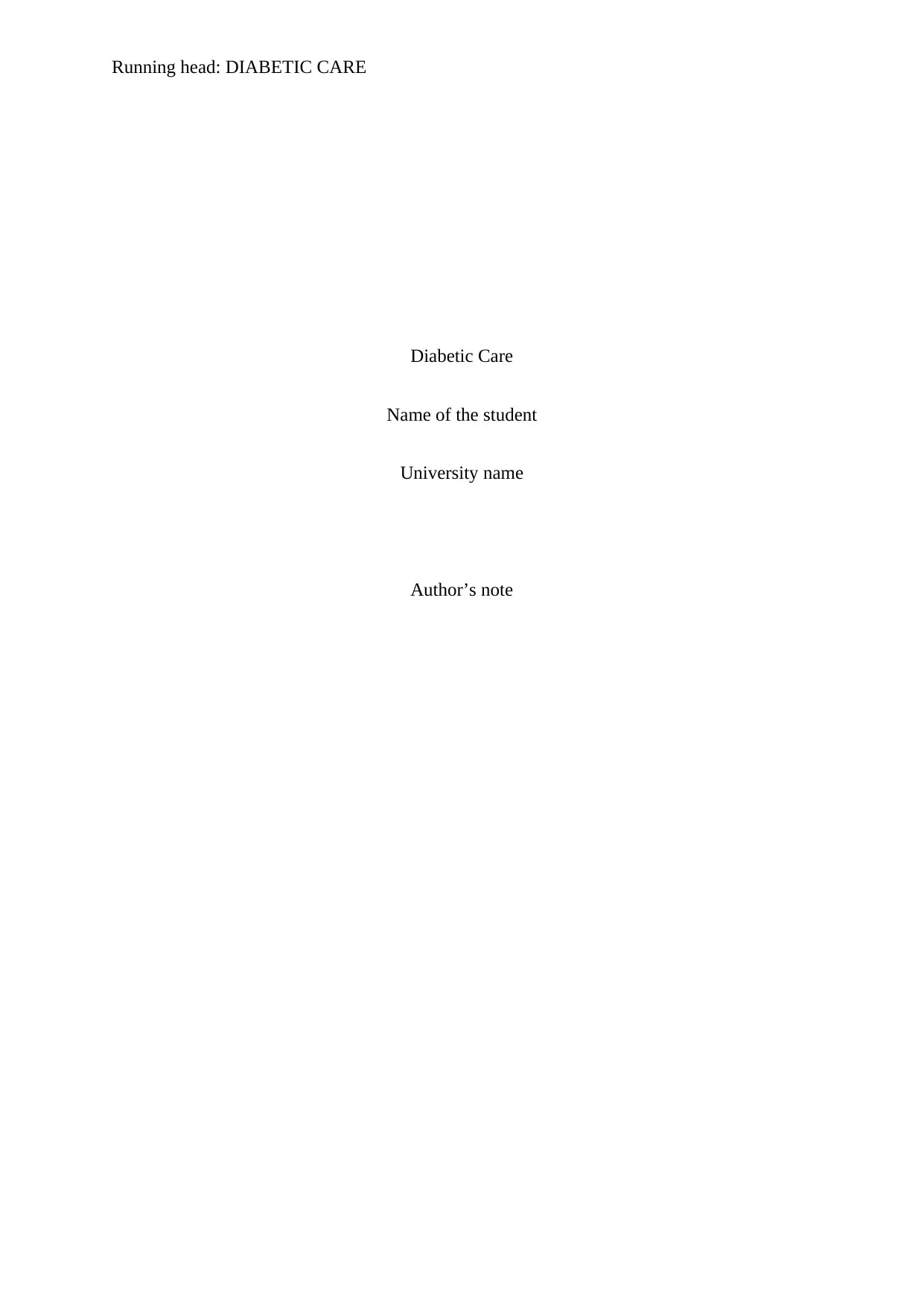
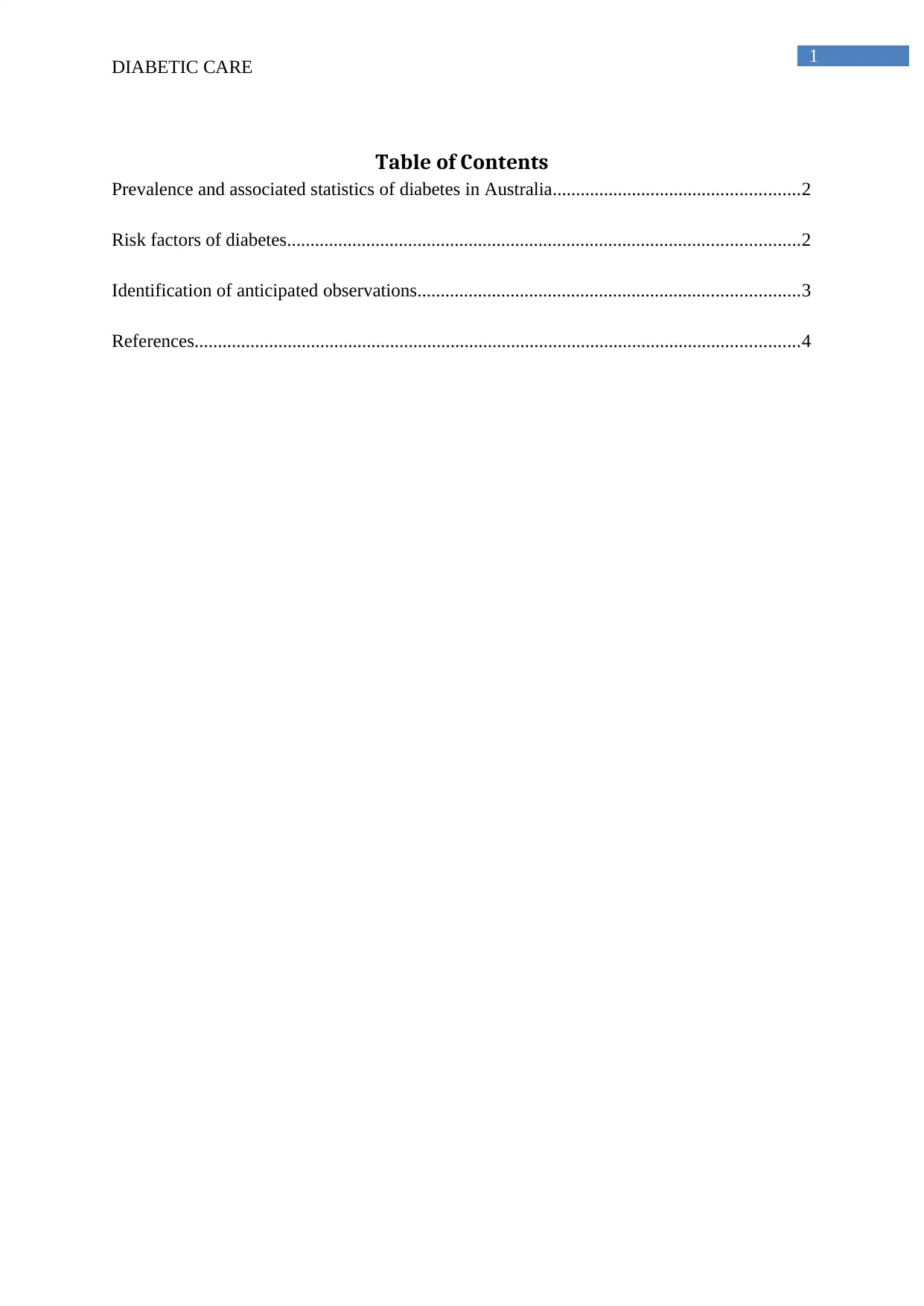
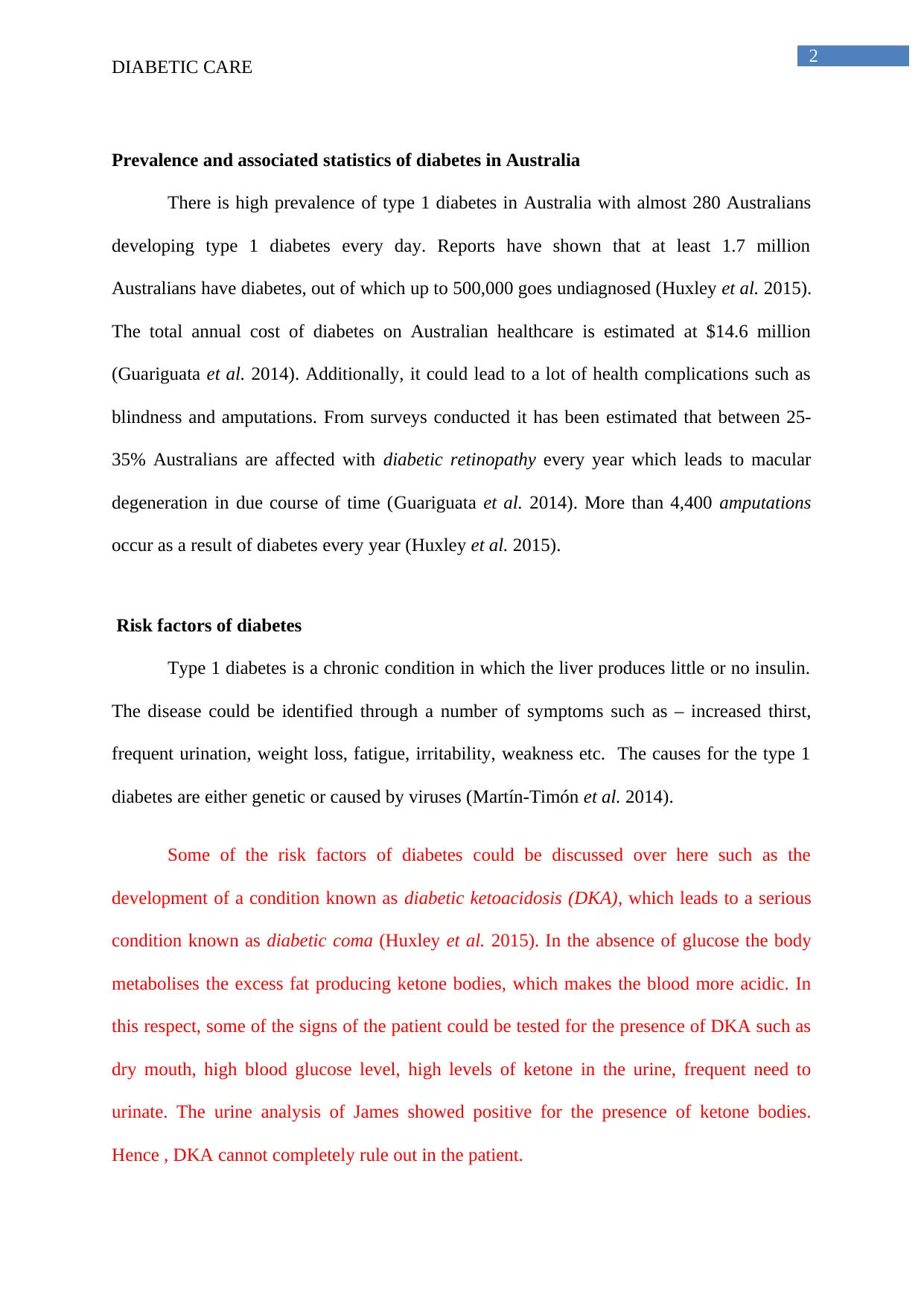

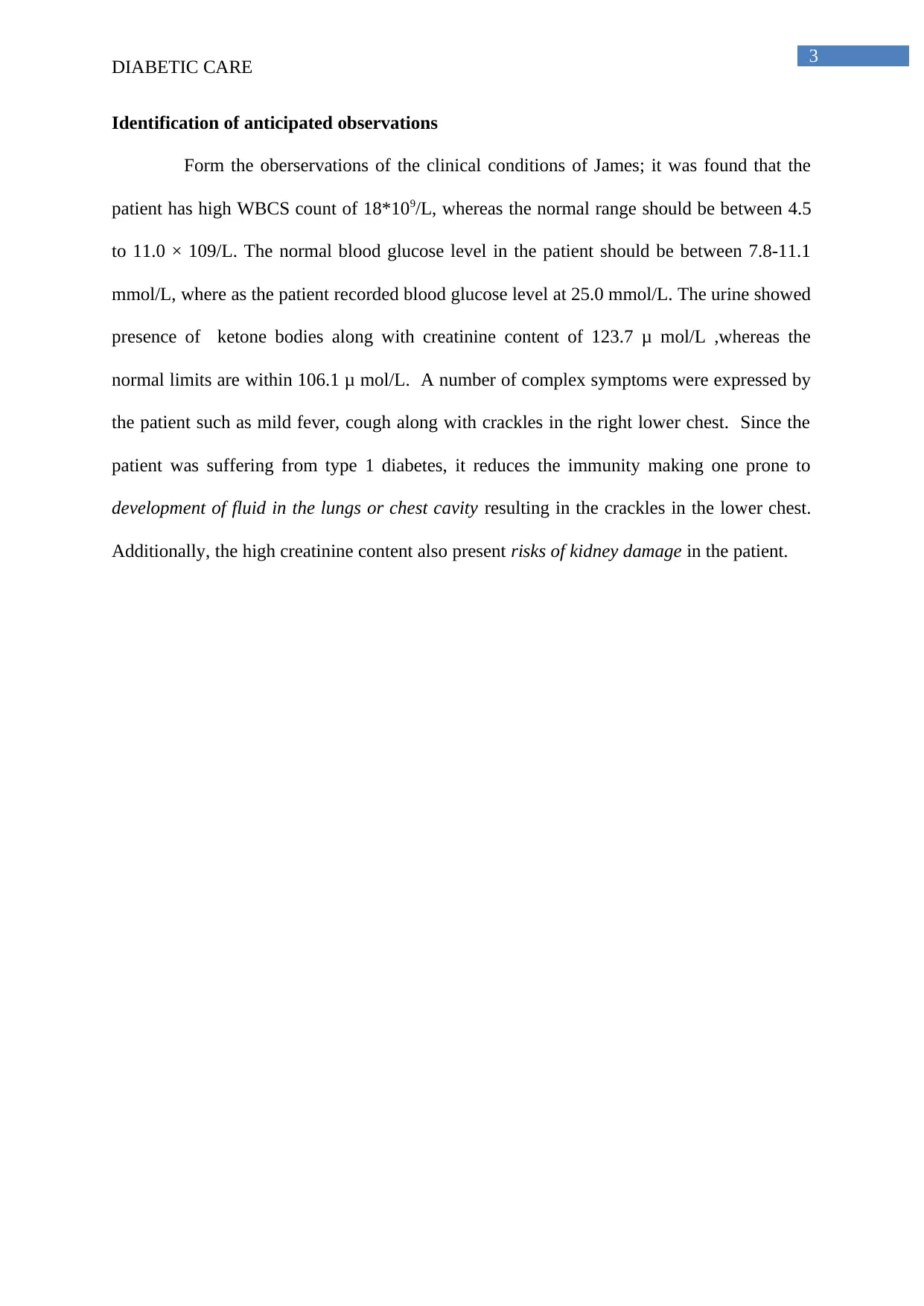
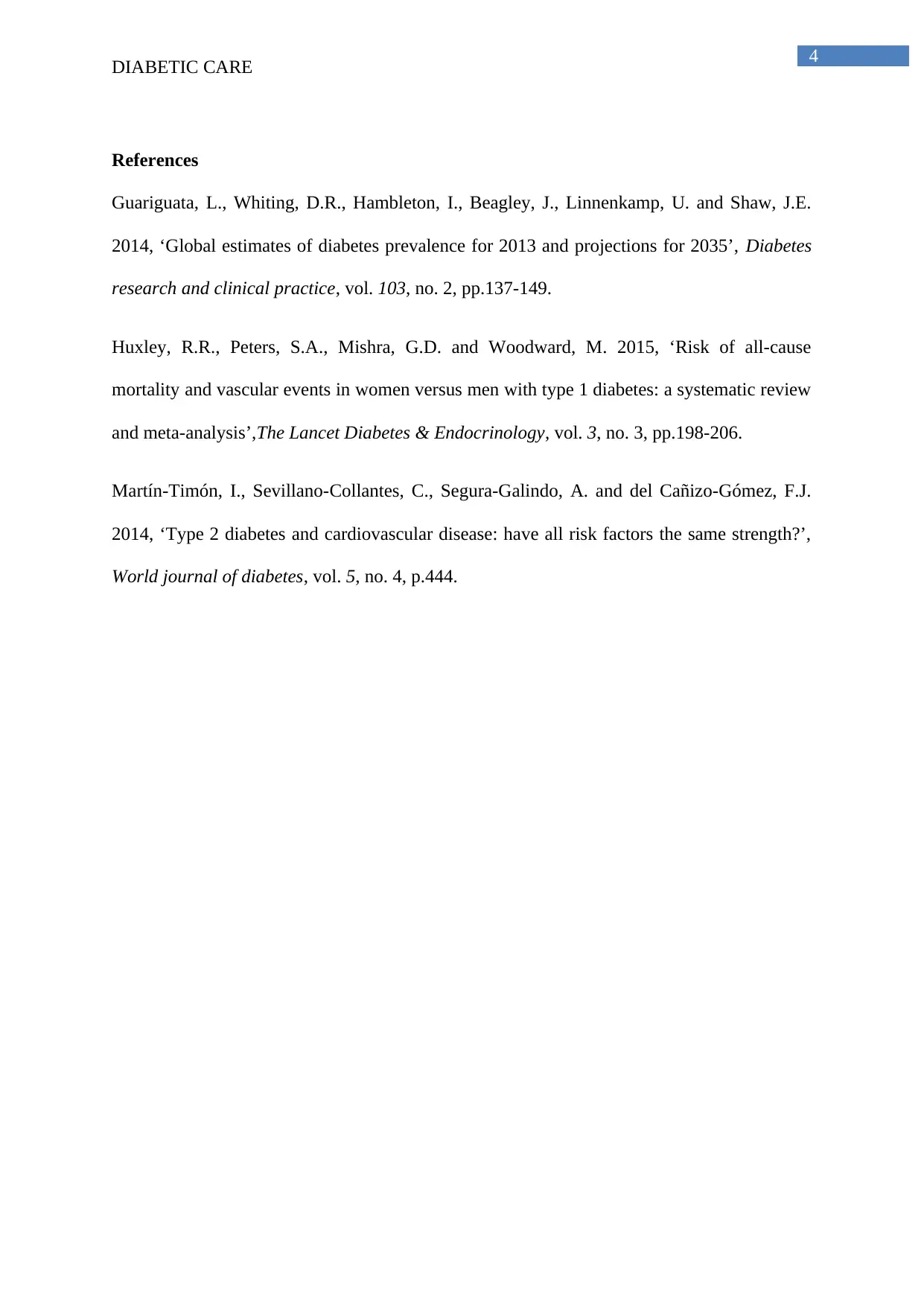






![[object Object]](/_next/static/media/star-bottom.7253800d.svg)